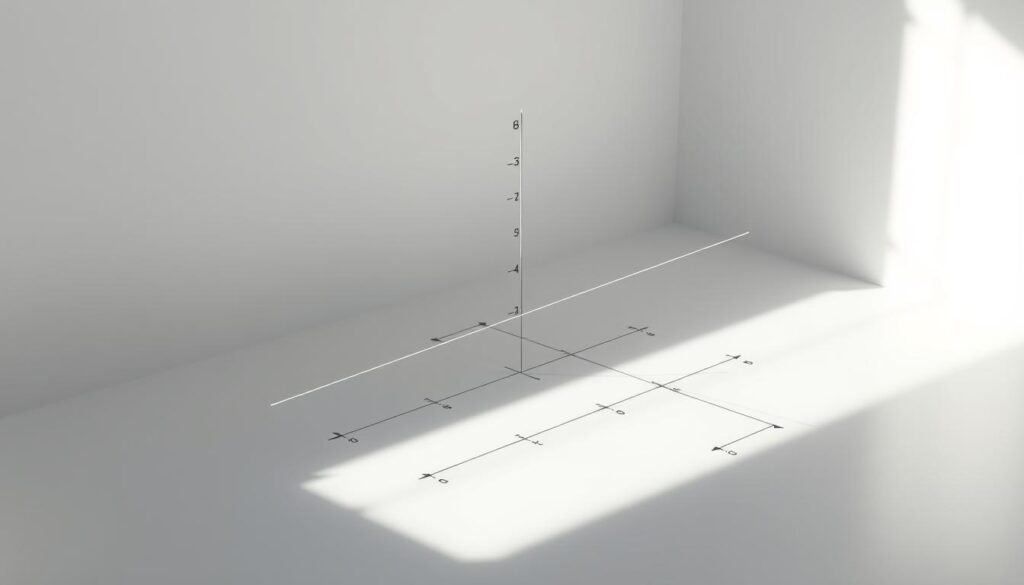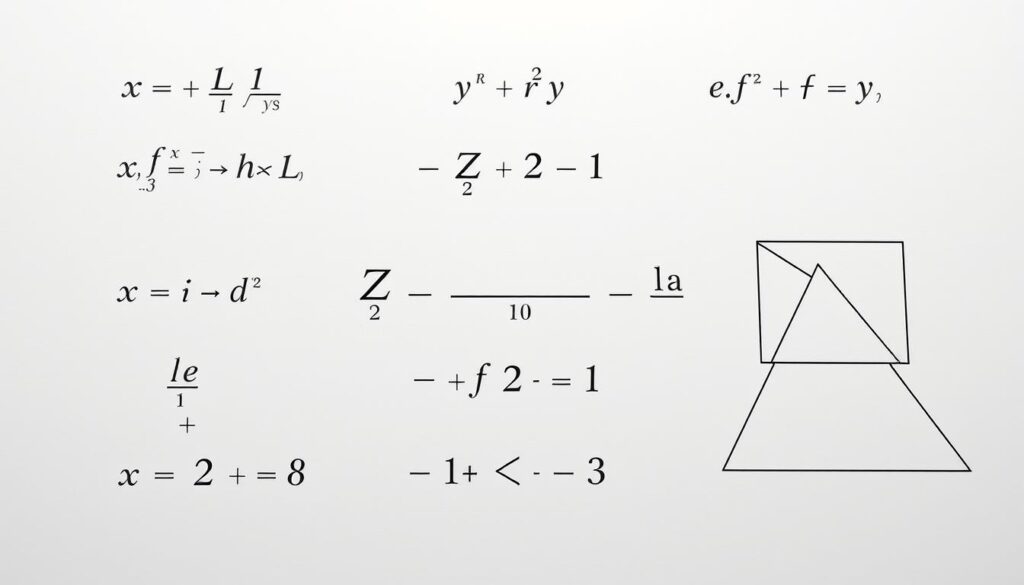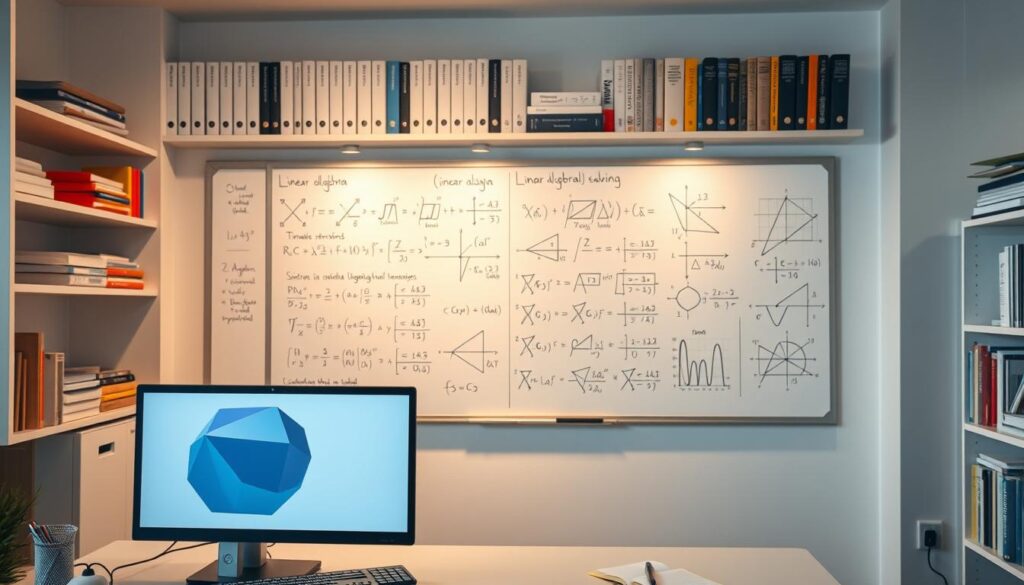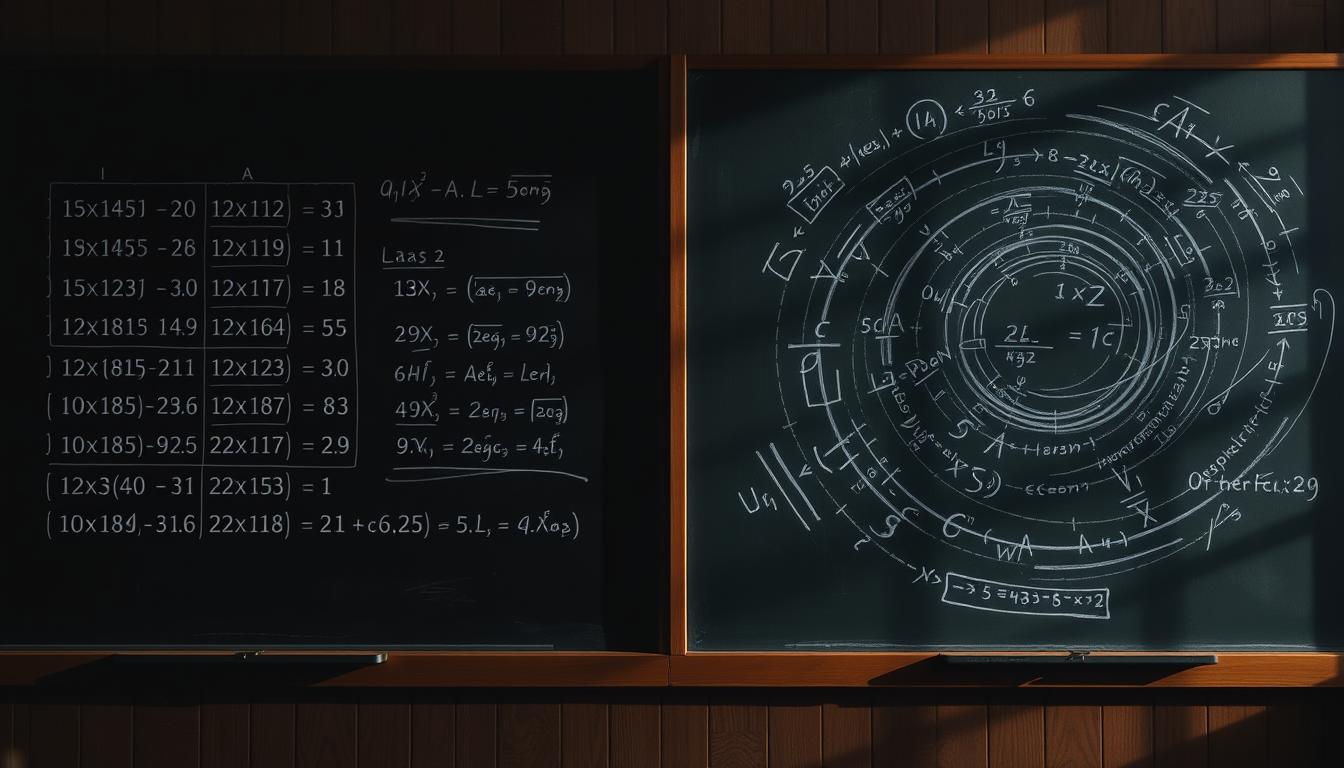For students of mathematics and science, linear algebra and calculus are two fundamental subjects that form the backbone of many advanced studies. While both are crucial for understanding various mathematical concepts, they serve different purposes and have distinct applications.
Linear algebra deals with the study of vectors, vector spaces, and linear transformations, providing a framework for solving systems of equations and representing complex data. On the other hand, calculus focuses on the study of rates of change, accumulation, and optimization, enabling us to model real-world phenomena and make predictions.
Understanding the differences between these two mathematical disciplines is essential for students to choose the right path for their academic and professional pursuits. In this article, we will delve into the distinct characteristics of linear algebra and calculus, exploring their applications, advantages, and limitations.
Key Takeaways
- Linear algebra and calculus are two distinct mathematical disciplines with different applications.
- Linear algebra deals with vectors, vector spaces, and linear transformations.
- Calculus focuses on rates of change, accumulation, and optimization.
- Understanding the differences between linear algebra and calculus is crucial for academic and professional pursuits.
- Both subjects have numerous applications in science, engineering, and economics.
The Mathematical Landscape: Understanding Two Core Disciplines
Understanding the mathematical landscape requires delving into its core disciplines, notably linear algebra and calculus. These two branches of mathematics are fundamental to advancing our knowledge in various fields.
The Fundamental Role of Mathematics in Science and Engineering
Mathematics plays a crucial role in science and engineering, providing the language and tools necessary for describing and analyzing complex phenomena. Both linear algebra and calculus are essential for modeling real-world problems, from the simplest mechanical systems to complex biological networks.
The Need for Different Mathematical Approaches
Different mathematical approaches are necessary because they allow us to tackle a wide range of problems. Linear algebra is particularly useful for dealing with systems that involve linear equations and transformations, while calculus is indispensable for understanding rates of change and accumulation.
Why Both Linear Algebra and Calculus Matter Today
In today’s world, both linear algebra and calculus are more relevant than ever. They are used in computer graphics, machine learning, and engineering optimization, among other applications. Understanding the distinction between these two mathematical disciplines is crucial for applying the right tool to the problem at hand, facilitating advancements in technology and science.
Linear Algebra: The Study of Vector Spaces and Linear Mappings
Linear algebra is a fundamental branch of mathematics that deals with the study of vector spaces and linear mappings. It provides a powerful framework for solving systems of linear equations and representing linear transformations between vector spaces.
Core Concepts of Linear Algebra
At the heart of linear algebra are several core concepts that form the foundation of the field. These include vector operations, matrix algebra, and linear transformations. Understanding these concepts is crucial for applying linear algebra to real-world problems.
Matrices, Vectors, and Linear Transformations
Matrices and vectors are the basic building blocks of linear algebra. A matrix is a rectangular array of numbers, while a vector is a quantity with both magnitude and direction. Linear transformations describe how these vectors change under certain operations.

Systems of Linear Equations
One of the primary applications of linear algebra is solving systems of linear equations. These systems can be represented in matrix form as Ax = b, where A is a matrix, x is a vector of unknowns, and b is a constant vector.
Eigenvalues and Eigenvectors
Eigenvalues and eigenvectors are critical in understanding the properties of linear transformations. They help in diagonalizing matrices, which simplifies many computations. The table below summarizes key aspects of eigenvalues and eigenvectors.
| Concept | Description | Importance |
|---|---|---|
| Eigenvalues | Scalar values representing change | Determine stability and oscillation |
| Eigenvectors | Directions of unchanged vectors | Provide basis for vector space |
The study of linear algebra has numerous applications in fields such as physics, engineering, and computer science, particularly in areas like linear algebra calculus usage and linear algebra calculus application. By mastering linear algebra, one can better understand and analyze complex systems.
Calculus: The Mathematics of Change and Motion
In the realm of mathematics, calculus stands out as a crucial tool for analyzing change and motion. It provides a framework for understanding how things change over time, making it indispensable in various fields such as physics, engineering, and economics.
Differential Calculus: Rates of Change
Differential calculus is concerned with the study of rates at which quantities change. It is used to determine the slope of curves and is fundamental in optimizing functions. This branch of calculus is crucial in understanding the behavior of physical systems.
Integral Calculus: Accumulation and Area
Integral calculus, on the other hand, deals with the accumulation of quantities. It is used to find the area under curves and volumes of solids. Integral calculus is essential in calculating total changes over defined intervals.
Multivariable Calculus: Extending to Higher Dimensions
Multivariable calculus extends the concepts of differential and integral calculus to functions of multiple variables. It is vital in modeling complex phenomena in higher dimensions, such as the motion of objects in three-dimensional space.
Limits and Continuity
The concept of limits is foundational to calculus, as it allows for the definition of derivatives and integrals. Understanding limits and continuity is crucial for applying calculus to real-world problems.
To illustrate the application of calculus, consider the following table that compares key aspects of differential and integral calculus:
| Aspect | Differential Calculus | Integral Calculus |
|---|---|---|
| Primary Focus | Rates of change and slopes of curves | Accumulation of quantities and area under curves |
| Key Concepts | Derivatives, differentiation rules | Definite integrals, integration rules |
| Applications | Optimization, physics (motion), economics | Area and volume calculations, physics (work, energy) |
Understanding when to use linear algebra versus calculus is crucial for applying the right mathematical tool to a problem. Calculus is particularly useful for analyzing dynamic systems and phenomena, while linear algebra is more suited for static systems and linear transformations.
Historical Development: How These Fields Evolved
The evolution of linear algebra and calculus is a story that spans centuries, influencing various aspects of mathematics and science. This historical development has not only shaped these disciplines but also significantly impacted their practical applications in numerous fields.
The Origins of Linear Algebra
Linear algebra has its roots in ancient civilizations, with early contributions from mathematicians such as the Babylonians and Greeks. However, it wasn’t until the 17th and 18th centuries that linear algebra began to take shape as a distinct mathematical discipline, with significant contributions from mathematicians like René Descartes and Carl Friedrich Gauss. The development of matrix theory and vector spaces further solidified linear algebra as a cornerstone of modern mathematics.
The Development of Calculus
Calculus, on the other hand, emerged in the 17th century, primarily through the work of Sir Isaac Newton and Gottfried Wilhelm Leibniz. Newton’s work on the method of fluxions and Leibniz’s development of the notation of differentials laid the foundation for differential and integral calculus. Over time, calculus evolved to encompass a broader range of applications, from physics and engineering to economics.
How These Fields Influenced Each Other
The development of linear algebra and calculus was not isolated; these fields influenced each other significantly. For instance, the use of linear algebra in solving systems of equations is crucial in certain calculus applications, such as optimization problems. Conversely, calculus techniques are used to analyze functions in higher-dimensional spaces, a concept rooted in linear algebra. This interplay has enriched both fields, enhancing their utility and depth.
What’s the Difference Between Linear Algebra and Calculus? And When Do You Need Each
The difference between linear algebra and calculus lies in their underlying philosophies and the types of problems they are designed to solve. Linear algebra focuses on vector spaces, linear transformations, and matrices, providing a framework for solving systems of linear equations and representing linear transformations. Calculus, on the other hand, deals with the study of continuous change, comprising two main branches: differential calculus and integral calculus.
Fundamental Philosophical Differences
Linear algebra is rooted in the study of linear equations and vector spaces, emphasizing the properties and transformations of linear systems. Calculus, by contrast, is concerned with the study of rates of change and accumulation, enabling the modeling of dynamic systems and optimization problems.
Static vs. Dynamic Mathematical Approaches
Linear algebra is typically used for static or linear problems, where the relationships between variables are linear and unchanging. Calculus, however, is employed for dynamic problems, where rates of change and accumulation are crucial. This fundamental difference in approach dictates the choice of mathematical tool for a given problem.

Complementary Nature of the Two Fields
Despite their differences, linear algebra and calculus are complementary disciplines. Linear algebra provides the mathematical framework for representing systems of equations and linear transformations, while calculus relies heavily on linear algebra in its multivariable forms. Together, they form a powerful toolkit for tackling a wide range of mathematical and real-world problems.
Decision Framework for Choosing the Right Mathematical Tool
To decide between linear algebra and calculus, consider the nature of the problem:
| Problem Characteristics | Linear Algebra | Calculus |
|---|---|---|
| Linear or Non-Linear | Linear | Non-Linear/Dynamic |
| Type of Analysis | Static Analysis | Dynamic Analysis |
| Key Concepts | Vector Spaces, Matrices | Rates of Change, Accumulation |
By understanding the fundamental differences and complementary nature of linear algebra and calculus, you can choose the most appropriate mathematical tool for your specific needs.
Mathematical Notation and Language: How They Differ
In the realms of linear algebra and calculus, notation and language play crucial roles in shaping our understanding of mathematical concepts. The distinct notational systems and linguistic conventions used in these fields reflect their unique historical developments and application areas.
The Symbolic Language of Linear Algebra
Linear algebra relies heavily on matrix notation and vector operations. Matrix algebra provides a compact way to represent systems of linear equations. The use of vectors and matrices enables the expression of complex linear transformations in a concise form.
Calculus Notation and Conventions
Calculus, on the other hand, employs notation that emphasizes rates of change and accumulation. The Leibniz notation for derivatives and integrals is widely used, facilitating the understanding of calculus concepts.
Reading and Interpreting Different Mathematical Languages
To navigate between linear algebra and calculus, one must be proficient in both notational systems.  Understanding the context in which a particular notation is used is crucial. For instance, the symbol for a derivative in calculus is distinct from the notation for a linear transformation in linear algebra.
Understanding the context in which a particular notation is used is crucial. For instance, the symbol for a derivative in calculus is distinct from the notation for a linear transformation in linear algebra.
By recognizing these differences, mathematicians and scientists can more effectively apply these mathematical disciplines to solve real-world problems.
Computational Approaches: Solving Problems in Each Field
In the realm of linear algebra and calculus, computational methods have revolutionized the way we approach and solve mathematical problems. These disciplines, fundamental to science and engineering, rely heavily on advanced computational techniques to tackle complex challenges.
Algorithmic Solutions in Linear Algebra
Linear algebra, dealing with vector spaces and linear mappings, employs various algorithmic solutions to solve systems of linear equations and perform linear transformations. Efficient algorithms like Gaussian elimination and LU decomposition are crucial for handling large matrices and vectors, which are common in applications such as computer graphics and machine learning.

Analytical and Numerical Methods in Calculus
Calculus, focusing on rates of change and accumulation, utilizes both analytical and numerical methods to solve problems. While analytical methods provide exact solutions, numerical methods such as the Runge-Kutta method are used when dealing with complex or unsolvable equations. These methods are vital in fields like physics and engineering, where dynamic systems are modeled and analyzed.
Modern Computational Tools for Both Disciplines
The advent of modern computational tools has significantly enhanced the application of both linear algebra and calculus. Software packages like MATLAB, NumPy, and SciPy offer efficient libraries for performing complex computations. These tools enable professionals and researchers to focus on the theoretical aspects of their work while leveraging computational power to solve intricate mathematical problems.
By combining traditional mathematical techniques with modern computational approaches, professionals can tackle a wide range of problems in linear algebra and calculus, from optimizing systems to modeling complex dynamics. This integration of mathematical theory and computational power is a hallmark of contemporary scientific and engineering endeavors.
Real-World Applications of Linear Algebra
From computer graphics to quantum mechanics, linear algebra’s influence is profound. Its applications are diverse, transforming various aspects of technology and science.

Computer Graphics and Animation
Linear algebra is pivotal in creating realistic graphics and animations. It enables the manipulation of vectors and matrices, which are essential for rendering 2D and 3D images. As noted by a prominent computer graphics expert,
“Linear algebra is the backbone of computer graphics, allowing for the efficient rendering of complex scenes.”
Machine Learning and Data Science
In machine learning and data science, linear algebra is used to develop algorithms that can analyze and interpret complex data. Techniques such as neural networks rely heavily on linear algebra concepts like vector spaces and linear transformations. Principal Component Analysis (PCA), a dimensionality reduction technique, is a prime example of linear algebra’s application in data science.
Engineering Systems and Optimization
Linear algebra is crucial in engineering for designing and optimizing systems. It helps in solving systems of linear equations that model real-world problems. For instance, in electrical engineering, linear algebra is used to analyze circuit behavior.
Quantum Mechanics and Advanced Physics
In quantum mechanics, linear algebra is fundamental. It is used to describe the states of quantum systems using vectors and operators. The mathematical framework of quantum mechanics relies heavily on linear algebra, making it an indispensable tool for physicists.
The applications of linear algebra underscore its importance in modern science and technology. Its influence extends across various disciplines, demonstrating its versatility and power.
Real-World Applications of Calculus
Calculus is a fundamental tool in understanding and analyzing complex phenomena in various fields. Its applications are vast and diverse, transforming the way we approach problems in science, economics, and engineering.
Physics and Engineering Dynamics
In physics and engineering, calculus is used to describe the laws of motion, energy, and gravity. It helps in modeling complex systems, such as fluid dynamics and thermodynamics, allowing for precise predictions and optimizations.
Economics and Business Optimization
Calculus is crucial in economics for understanding the behavior of markets and optimizing business processes. It is used to determine the maximum and minimum values of functions, such as cost and profit, enabling businesses to make informed decisions.
Biological and Medical Modeling
In biology and medicine, calculus is applied to model population dynamics, understand the spread of diseases, and analyze complex biological systems. It also plays a role in medical imaging and diagnostics.
Weather Prediction and Climate Science
Calculus is essential in weather prediction and climate science for modeling atmospheric and oceanic circulation patterns. It helps in understanding complex climate systems and predicting future changes.
These examples illustrate the versatility and importance of calculus in understanding and analyzing complex phenomena across various disciplines.
Careers and Fields That Rely on Mathematical Expertise
Linear algebra and calculus are fundamental to many careers, influencing fields such as engineering, economics, and computer science. Professionals with a strong background in these mathematical disciplines have a wide range of career opportunities.
Professions Dominated by Linear Algebra
Linear algebra is crucial in computer graphics, where it’s used to perform transformations and projections. It’s also essential in machine learning and data science for tasks like data preprocessing and dimensionality reduction.
Careers Where Calculus is Essential
Calculus is vital in physics and engineering dynamics, where it’s used to model the motion of objects and optimize systems. It’s also applied in economics and business optimization to analyze and maximize profit.
Interdisciplinary Fields Requiring Both Skill Sets
Many interdisciplinary fields, such as computational biology and medical imaging, require expertise in both linear algebra and calculus. These fields involve complex data analysis and modeling, making mathematical expertise indispensable.
By mastering linear algebra and calculus, professionals can unlock a wide range of career opportunities and contribute to innovative solutions in various fields.
Learning Pathways: How to Master Both Disciplines
Mastering linear algebra and calculus requires a strategic approach to learning. Understanding the distinction between these two mathematical disciplines is essential for a comprehensive grasp of mathematics.
Recommended Learning Sequence
Begin with the basics of linear algebra, focusing on vector spaces and linear mappings. Then, move to calculus, starting with differential calculus and progressing to integral calculus.
Resources for Self-Study
Utilize online resources such as Khan Academy, MIT OpenCourseWare, and textbooks like “Linear Algebra and Its Applications” by Gilbert Strang for linear algebra. For calculus, resources like “Calculus” by Michael Spivak are highly recommended.
Overcoming Common Challenges
Practice is key. Regularly solve problems and engage with online communities to clarify doubts. Understanding the linear algebra calculus distinction will help in applying the right mathematical tool to the problem at hand.
Building Intuition Beyond Formulas
To truly master linear algebra and calculus, it’s crucial to develop an intuition that goes beyond mere formulas. This involves visualizing concepts and understanding their practical applications in various fields.
Here’s a comparison of the learning pathways for linear algebra and calculus:
| Topic | Linear Algebra | Calculus |
|---|---|---|
| Core Concepts | Vector spaces, linear mappings | Limits, derivatives, integrals |
| Applications | Computer graphics, machine learning | Physics, engineering dynamics |
Conclusion: Embracing Mathematical Diversity
Understanding the difference between linear algebra and calculus is crucial for appreciating the richness of mathematical knowledge. Both disciplines have unique strengths and applications, making them indispensable in various fields.
A comparison of linear algebra and calculus reveals that they complement each other, providing a comprehensive understanding of mathematical concepts. Linear algebra offers a static perspective, focusing on vector spaces and linear mappings, while calculus provides a dynamic view, examining rates of change and accumulation.
By mastering both linear algebra and calculus, individuals can develop a deeper understanding of mathematical principles and enhance their problem-solving skills. This, in turn, can lead to innovative solutions in fields such as science, engineering, and economics, ultimately driving progress and advancement.
In conclusion, appreciating what’s the difference between linear algebra and calculus, and understanding the linear algebra calculus comparison, can foster a greater appreciation for the diversity and complexity of mathematical knowledge.
